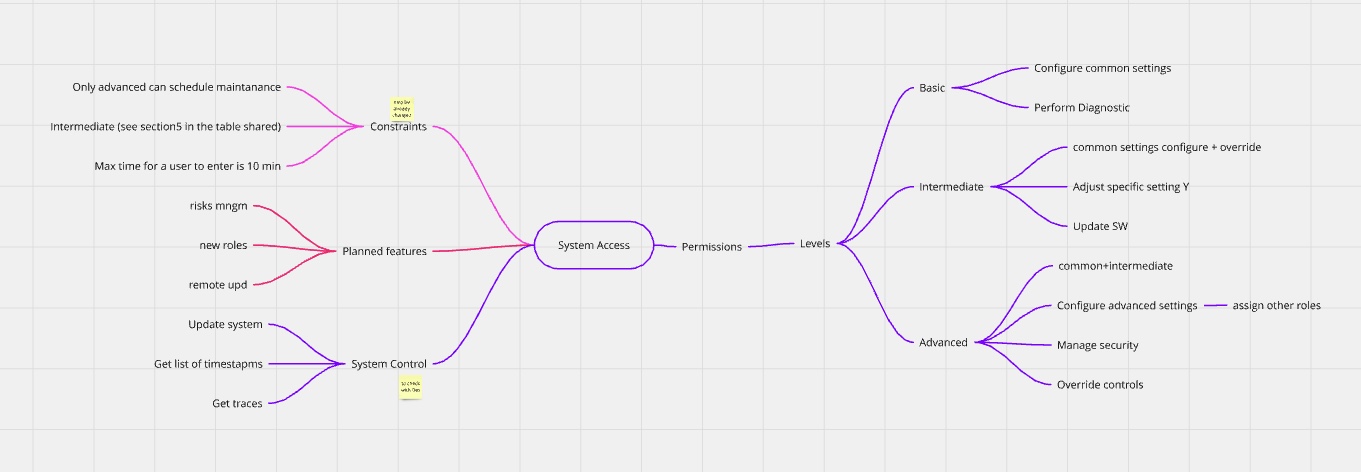Crafting Effective Mindmaps for Mastering the Unknown
Technical writers often write about topics they don’t deeply understand. This is both a plus and a challenging curse of our job.
A plus, because it allows us to get acquainted with a multitude of new concepts, try out innovative products, and explore the tech world extensively. Being there when new things in IT are being created — that's what I personally love the most about tech writing.
And why the curse? It's because this approach involves a constant feeling of uncertainty and the nagging realization that "I don't understand anything at all, omg!".
You always need to ask a lot of questions, place yourself in the learner's mindset, and continuously feel the pressure to keep up and figure everything out. And deadlines often demand that you do this really quickly.
So, here I share my tips and insights on how I gather information and organize it, so I don’t forget the details and can write documentation faster (not worrying so much about the amount of the Unknown).
The curse of a blank page
Starting from scratch can be tough. We've all been there—staring at a blank page, feeling frustrated or overwhelmed as we try to start writing. To get myself moving, I use braindumps to jot down all the facts I have, organizing them to prepare for the next steps. This makes the process much less intimidating for me.
What do I use?
Mindmaps to the rescue!
The main thing that helps me most these days is a mindmap. A mindmap is a fantastic tool that visually organizes information.

When I listen to stakeholders or attend a knowledge-sharing meeting, I always come prepared. I bring a mindmap template with me, and each time a new idea pops up, I jot it down in my mindmap. If I don’t have enough time during the meeting, I write all my thoughts and ideas immediately afterward while they are still fresh in my memory. The main idea here is to keep all the major details in the mindmap. This makes it easier for me to move on to the breakdown phase.
OK, and what’s next?
After creating the mindmap, I usually analyze the results and then break this information into hierarchical chunks. I usually split my mindmaps into the "what", "how", "why" and "when" and "where" topics to have more distict visualization.
It’s not always obvious how to best organize the information, but often the mindmap itself can help you with that by visually representing the topics and their connections. At the very least, it helps structure the chaos in your head after a knowledge-sharing meeting. 😅
Your mindmap doesn't have to be perfect. It’s totally fine if there’s a bit of chaos or if not every idea perfectly connects to the main topic. Don’t stress about making it flawless. Remember, it’s just a tool to help you think, not the final product. So, let it be a little messy—it's doing its job.
Traps with mindmaps
When creating a mindmap to organize your thoughts, there are a few traps you can easily fall into.
| Trap | Solution |
|---|---|
| ❌ Too Many Topics, No Focus Trying to cover too much leads to scattered, disconnected branches, leaving you feeling confused rather than clear. | ✅ One Clear Central Idea Make sure everything in your mind map connects back to a single central theme. This keeps your thoughts focused and manageable, so you don't get overwhelmed. |
| ❌ Shallow Thinking If your mind map only scratches the surface, it becomes more of a list than a tool for real insights. You miss out on deeper ideas. | ✅ Explore your ideas! Use sub-branches to expand on your thoughts, gather specific details, and uncover new opportunities. |
| ❌ Filled with Irrelevant Stuff When your map is full of unrelated ideas, it gets messy and hard to follow. This just distracts you from your main purpose. | ✅ Keep It Simple and Clean Focus on what's relevant. Balance creativity with readability, so you can quickly find the ideas you're looking for without wading through clutter. |
| ❌ Random Colors and Shapes Everywhere Using lots of colors and shapes is fun, but if they don't have meaning, your mind map becomes a confusing rainbow. | ✅ Give Colors and Shapes Purpose Use consistent colors and shapes to represent specific ideas or categories. Create a simple key to remind yourself what each one means, so it’ll make sense when you come back to it later. |
What are the tools?
Oh, there are plenty!
The one I use most is Xmind. Although, in most cases, there were no macros available for displaying the files in Confluence, it’s a super easy-to-use and convenient tool. I love that you can pick from a variety of preset styles whenever you like—even when you’re almost done with all the blocks. It’s like giving your work a fun makeover at the last minute.🔆
Also, drawio is a good choice. There are different macros available for Confluence.
Miro is another tool I've used a couple of times at work. It has a macro and allows easy collaboration with the team (they might have something to add to your mindmaps), and you can track all changes and history.
I’ve also tried Figma Jamboard a few times. It’s a nice tool, although it has some restrictions on user collaboration. But if you're using the mindmaps solely for yourself, that’s not a problem at all.
Anyways...
You can try this out next time you have a meeting where you need to grasp a new topic for documenting. I'm sure it will be fun—at the very least, you'll have an opportunity to play around with colors and shapes. 🙃
